I cannot think of a single sound in the world (minus human or animal pain) that ellicits a more visceral reaction in me than the sound of a chain saw. So when two late winter storms with heavy snow caused a domino effect that started with the mid-trunk snapping of a 75’ oak and ended with a total of 6 trees uprooted in its path from bearing its weight – parts of the mass potentially threatening our Barrington facility – we were left with no alternative but to call the experts and have them removed with near-surgical precision (as near surgical as a chain saw can be, I suppose).
Our one pond-side spruce seemed to be holding up the mass and we hoped that it would withstand the heavy load until the tree cutters could arrive, which they said had to wait until the snow melted due to safety concerns. The spruce leaned and struggled under its burden but held it did. And now it stands alone amid a clearing of nothing more than piles of formerly statuesque oaks, cherries and spruce.
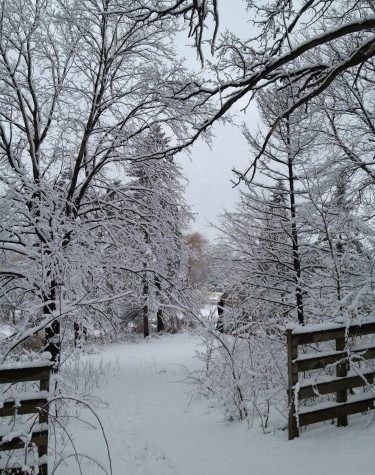
When the storms first hit, I felt my normal anxiety over the heavy, wet snow that came late enough in the year to threaten Great Horned Owl and squirrel nests. I found myself conflicted when admiring the beauty of the snow recognizing the damage that the storm could have on our native wildlife. Sometimes storms cause devastation to the animal population we serve and it really just all depends on the timing of the storm relative to what species are nesting as well as the storm’s severity, of course. A couple of summers ago, torrential downpours led to an influx of 34 nestling Cooper’s Hawks. This year’s late winter snowstorm didn’t lead to a similar spike in our admissions and my hope is that the nestling owls and newborn squirrels weren’t impacted.
We often ask people not to cut trees during nesting season, which in Illinois spans from January through October, unless the tree is a safety issue. There was absolutely no way that we could wait on this dangerous situation and I knew that it was very early in nesting season with squirrels, raccoons and Great Horned Owls being the only likely candidates. We knew that we didn’t have a Great Horned nest in any of the trees but couldn’t be certain about the other two.
So as I listened to the sound of chain saws I hoped that the cutters wouldn’t find babies. I was relieved when they reported that there were no nests in the trees. They agreed to put our business cards in all of their trucks because, although nests are protected and tree companies are not supposed to cut a tree if they know it has an active nest, sometimes mistakes happen.
We are grateful that our spruce stood strong and tall and that the trees didn’t fall on our buildings. We’ll clean up the massive piles of our former trees and begin planting. I see young oaks in our future.To the right of the original oak tree that snapped, five other trees
uprooted and were leaning on our one remaining spruce
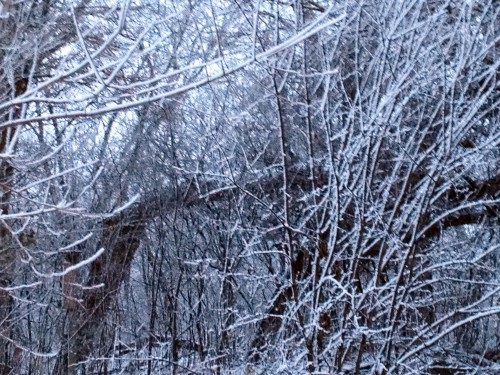
The oak tree that snapped and started the domino effect 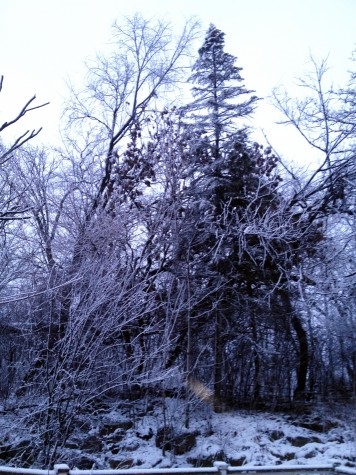
To the right of the original oak tree that snapped, five other trees
uprooted and were leaning on our one remaining spruce
By the time the snow melted and the tree cutters could safely remove
the trees, the spruce was signficantly leaning under the weight
Some of our former trees 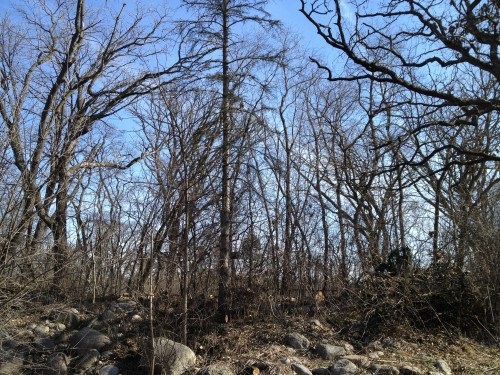
Piles of debris surround our ponds and waterfalls, waiting to be cleared away 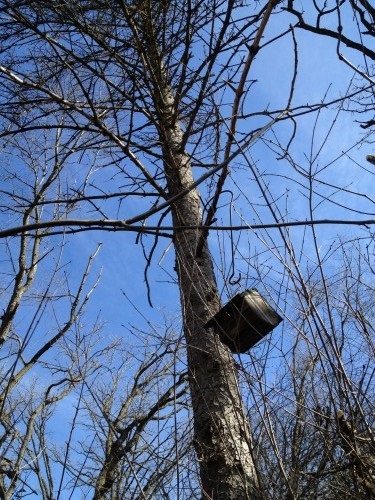
And our half dead spruce, now relieved of the weight of the other trees,
once again stands tall! We are grateful that this spruce never gave away.
